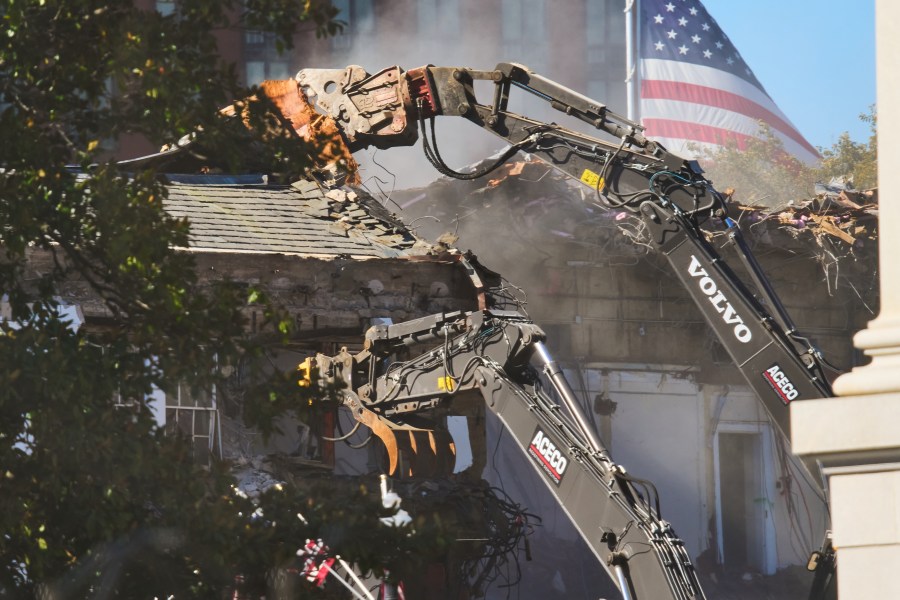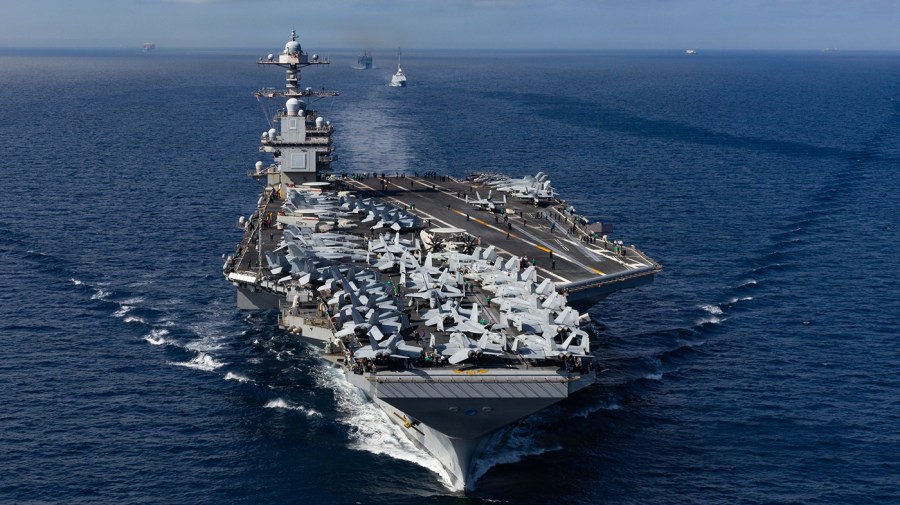
President Trump’s construction of a grand ballroom attached to the White House — set to begin this week with the demolition of part of the East Wing — won’t be the first time a president has left a lasting impression on the people’s home.
Presidents from Teddy Roosevelt to Barack Obama have renovated parts of the building to their liking. And Harry Truman oversaw a major modernization of the White House, built in 1792.
The White House Historical Association said this week, “The South Portico, the North Portico, the East Wing, the West Wing and the Truman Balcony all aroused concern at the time – but today, we cannot imagine the White House without these iconic elements.”
However, nothing done in the past matches Trump’s ambitions, Ed Lengel, who served as chief historian of the White House Historical Association from 2016-18, told The Hill.
He said, “Nothing like this had ever been done before. And I think I can say this with complete confidence. Nothing on that scale, even close to that scale, has ever been done before.”
Trump envisions a grand ballroom, paid for by private donors, attached to the East Wing for entertaining world dignitaries and other guests.
The White House has hit back at criticism of the project, calling it “a bold, necessary addition that reflects the Commander-in-Chief’s storied history of improvement and renovation to maintain the Executive Residence as a symbol of American excellence.”
Here’s a timeline of other major White House renovations:
1902
Construction of the West Wing, which houses the offices of the President and his immediate staff, began under former President Theodore Roosevelt and was completed under former President Taft.
Before 1902, the President worked from various locations in the Executive Mansion, but there was no designated space for official business. Roosevelt wanted a central office for the Commander-in-Chief and hired workers to build a rectangular space on the west side of the White House for the first presidential office, later called the “Roosevelt Room”.
The Roosevelt renovation was planned and implemented by the “famous” New York architectural firm of McKim, Mead & White. white House,
According to the White House Historical Association (WHHA), Roosevelt first worked in his new office on November 5, 1902, and held his first Cabinet meeting the next day.
Taft expanded what was called the Temporary Executive Office Building in the West Wing seven years later and placed an oval-shaped office in its center.
1933
According to the Times, former President Franklin D. Roosevelt added 25,000 feet of permanent office space to the West Wing when he took office three decades later. white House,
“An extensive underground office area with a ‘penthouse’ story and a light well was constructed,” WHHA said. “The Oval Office was moved to its current location – the southeast corner of the West Wing – to overlook the Wilson Rose Garden.”
Roosevelt also built an indoor pool on West Terrace for the President to exercise during his battle with polio. According to WHHA$12,000 to build the pool was raised by The Daily News, which established the Roosevelt Swimming Pool Fund.
That pool has since been covered by the White House Briefing Room. But an outdoor pool, built under President Ford, still exists on the South Lawn. It was funded through private donations.
1948
Truman oversaw the White House’s most significant construction project, moving to the adjacent Blair House after parts of the general residence were deemed unsafe.
In March 1949 Truman asked Congress to create a Commission on Renovation of the Executive Mansion to address serious architectural inadequacies in the White House. It consisted of six members: two each appointed by the President, the House, and the Senate.
Truman and his family moved there soon after his re-election in 1948, spending much of his second term in the nearby building, which now hosts foreign dignitaries during their visits.
According to , the renovation cost approximately $5.7 million, which is more than $50 million in today’s dollars. Truman Library Institute,
The White House was destroyed, but Truman, working closely with architect Lorenzo Winslow, tried to preserve as much of the building as possible.
Truman was pleased with the results, if not the price.
He said of returning to the residence, “Bess and I saw the East Room, the Green Room, the Blue Room, the Red Room and the State Dining Room. They are beautiful. The Hall and the State Staircase are beautiful too.” “It’s worth it despite all the troubles and worries – but not five and a half million dollars.”
“If I had been in charge of the construction it would have been done for half the money and half the time!”
1973
Former President Nixon added a one-lane bowling alley to the White House.
White House staff and visitors still occasionally use the bowling alley, located down the path leading to the North Portico.
The underground space was paid for by private donors, according to White House MuseumHowever, this was not the White House’s first bowling alley.
Under Truman, a bowling lane was added in 1947 to the location now used as the Situation Room. At that time, the staff started a bowling league. Former President Eisenhower moved Alley to the basement beneath the Old Executive Office Building.
2009
Former President Obama converted the White House tennis court into a full-scale basketball court in 2009. It was adapted for use in both tennis and basketball. white House,
According to the Obama White House, college basketball championship teams and the Wounded Warriors have played on the court.
During his first term, President Trump added a new White House Tennis Pavilion. Overseen by First Lady Melania Trump, the project included the renovation of the existing tennis courts and the adjacent “Grandchildren’s Garden”. Press release In those days.












